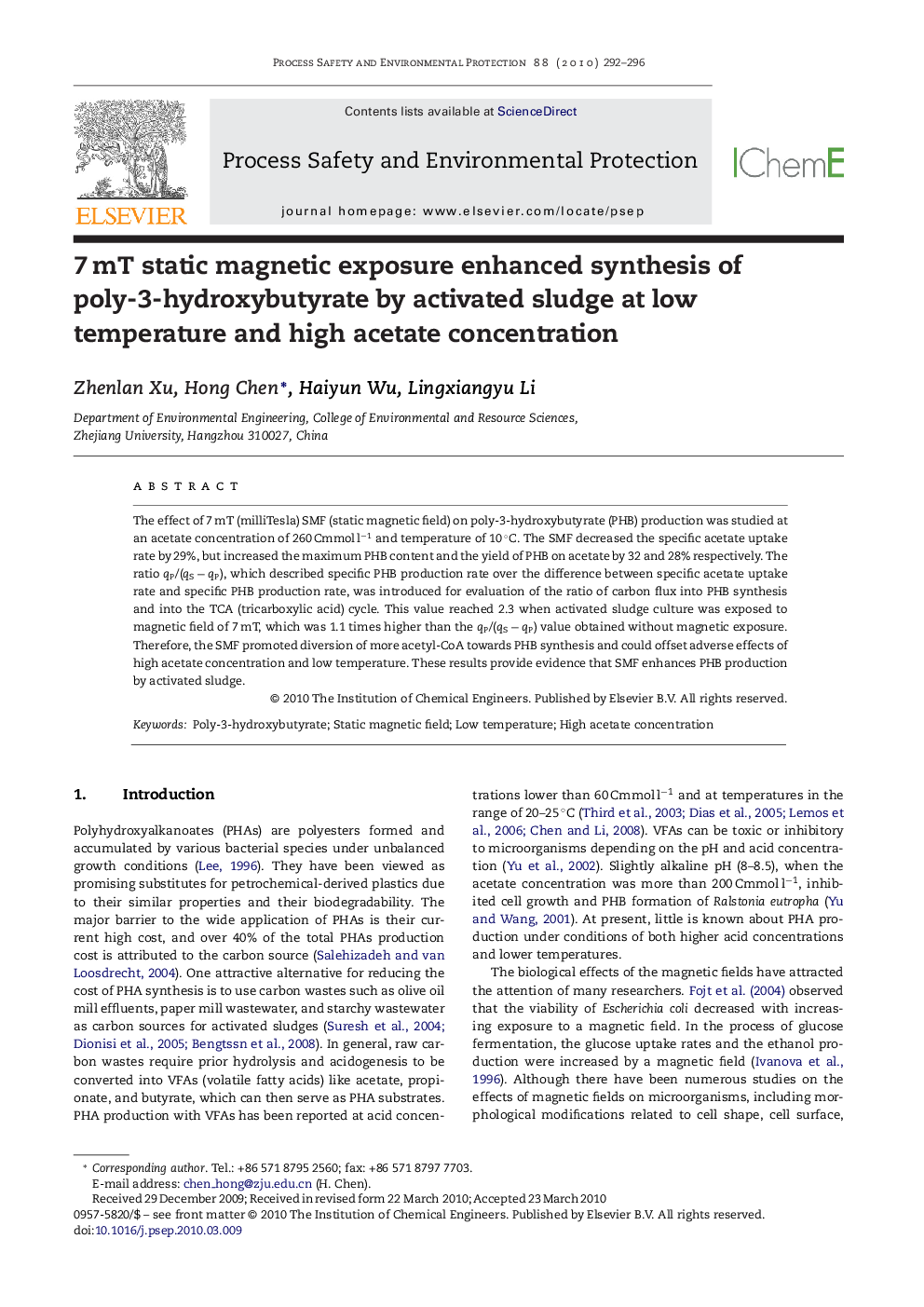| Article ID | Journal | Published Year | Pages | File Type |
|---|---|---|---|---|
| 588673 | Process Safety and Environmental Protection | 2010 | 5 Pages |
Abstract
The effect of 7 mT (milliTesla) SMF (static magnetic field) on poly-3-hydroxybutyrate (PHB) production was studied at an acetate concentration of 260 Cmmol lâ1 and temperature of 10 °C. The SMF decreased the specific acetate uptake rate by 29%, but increased the maximum PHB content and the yield of PHB on acetate by 32 and 28% respectively. The ratio qP/(qS â qP), which described specific PHB production rate over the difference between specific acetate uptake rate and specific PHB production rate, was introduced for evaluation of the ratio of carbon flux into PHB synthesis and into the TCA (tricarboxylic acid) cycle. This value reached 2.3 when activated sludge culture was exposed to magnetic field of 7 mT, which was 1.1 times higher than the qP/(qS â qP) value obtained without magnetic exposure. Therefore, the SMF promoted diversion of more acetyl-CoA towards PHB synthesis and could offset adverse effects of high acetate concentration and low temperature. These results provide evidence that SMF enhances PHB production by activated sludge.
Related Topics
Physical Sciences and Engineering
Chemical Engineering
Chemical Health and Safety
Authors
Zhenlan Xu, Hong Chen, Haiyun Wu, Lingxiangyu Li,
